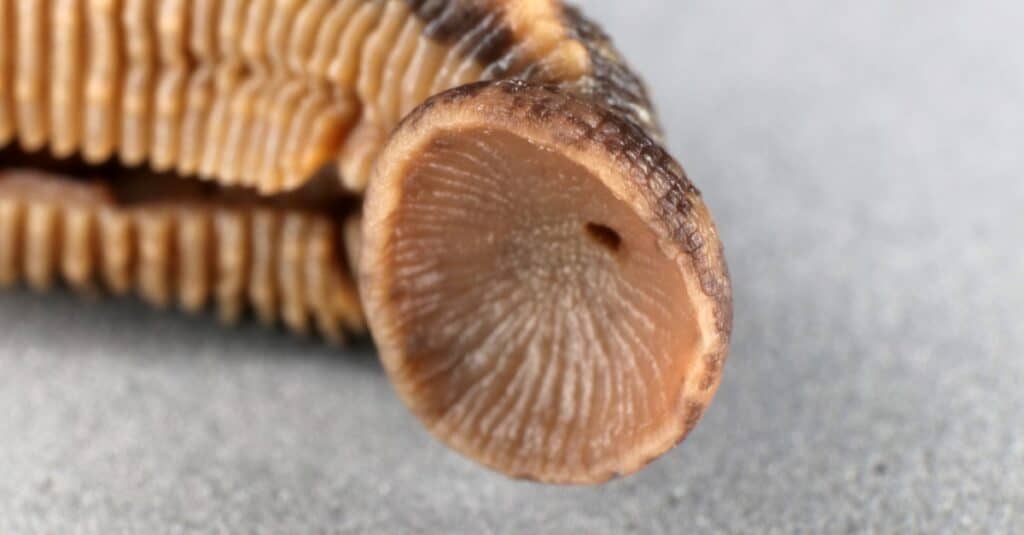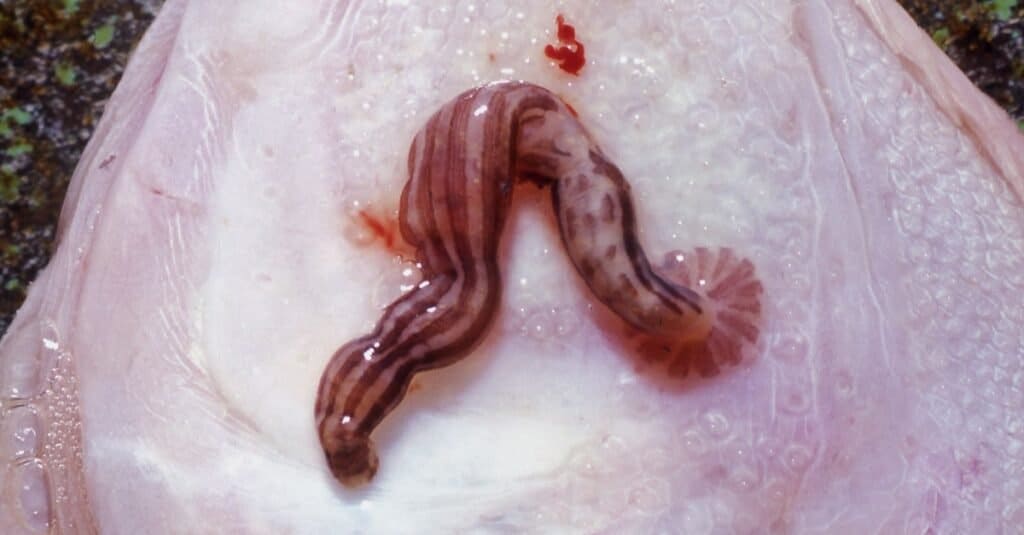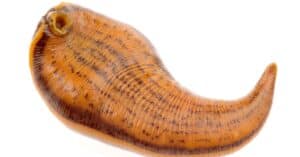In the eyes of humans, leeches are undesirable, and we regard them as bloodsucking parasites and even use the word “leech” as a derogatory term. In the past, leeches were utilized for medicinal purposes, but today, they are mainly used to clean sensitive tissues during surgery. Nevertheless, leeches can be a nuisance, especially if you are supposed to have fun on the lake or pond. Although swimming among leeches makes the water unsettling, it’s important to bear in mind that leeches are common and can be found anywhere except Antarctica. So, what leeches are found in Texas, and when are they active?
Texas is home to a wide variety of wildlife; unfortunately, even those unpleasant creatures thrive in this massive state. While leeches and earthworms are related, most leeches obtain their sustenance from blood rather than soil. These pesky little vampires are mostly harmless, but a handful of these bloodsuckers are known to act as carriers of diseases, other parasites, and bleeding at the bite site. This article will uncover the types of leeches that live in Texas, when they are active and other interesting facts.
What Are Leeches?

A leech resembles a large, glossy, dark earthworm, and it features a solid, segmented body with tapering endpoints.
©photowind/Shutterstock.com
Leeches, also known as segmented worms, are related to earthworms. They may detect changes in their watery environment through vibrations, which makes them attracted to swimmers.
A leech resembles a large, glossy, dark earthworm, and it features a solid, segmented body with tapering endpoints and two suckers at each end. The body of the leech is often a deep, brownish-green color without any markings or stripes, and some appear black because they are so dark. Leeches come in different sizes, but the average is 2 inches long. The largest leech species is the giant Amazon leech (Haementeria ghilianii), which may reach lengths of 18 inches and widths of 4 inches.
What Types of Leeches Live in Texas?
Macrobdella decora and Philobdella gracilis are the two leeches found in Texas. Smaller leeches, typically parasitizing common aquatic creatures like fish, frogs, turtles, and snails, are more frequently observed in Texas waters. The bodies of leeches, which are extremely prevalent on turtles, resemble leaves. In general, those that attach to fish are rounder and thinner. Many freshwater leeches do not actually survive as parasites but rather as scavengers or predators of small aquatic creatures like worms and developing insects.
The average length of a leech in Texas’ inland waters is less than an inch; at maximum, it can reach 1 and 1/2 inches. Leeches can become abundant on fish or other aquatic animals and can be a nuisance to swimmers in years of drought when water levels in lakes and ponds become low.
When Are Leeches in Texas Active?

Leeches are more noticeable during the dry summer months when water bodies are reduced.
©Ronald Shimek/Shutterstock.com
While leeches are very adaptable to their environment, they favor warm temperatures. In the summer, leeches flourish more. Due to the intense heat in Texas, which causes low water levels in lakes and rivers, the slimy critters are frequently more noticeable during the dry summer months when water bodies are reduced. Because of the springtime reproduction of these bloodsuckers, the young leeches emerge from their cocoons a few weeks later, just in time for the swimming season!
Moreover, animals moving in and out of a pond could spread leeches. Turtles, for instance, travel over land. Leeches can move through flooded or damp terrain on their own. A leech is a naturally occurring component of the environment that loves shallow, stagnant water, especially when there are leaves, aquatic weeds, submerged branches, or other organic materials.
How Do Leeches Bite?
The main distinction between leeches and other bloodsuckers is that they don’t actually use their mouths to draw blood from their hosts. They attach to a host using incredibly powerful suction cups, sucking on the host’s skin until some blood leaks out. Despite how painful it may sound, leeches are easy to remove and don’t hurt the skin. Typically, a leech has two or three rows of small teeth, and you can’t feel a leech bite in part due to the small size of these fangs. Their saliva also contains an anesthetic, which prevents their target from feeling the bite, and an anticoagulant, which keeps their prey’s blood flowing when they bite.
Bites from leeches are merely irritating and neither harmful nor painful. Leeches don’t induce stinging or leave a venomous stinger in the wound, unlike other animals that bite. Although not all leeches in Texas suck blood, those that do prefer fish and turtle blood.
Are Leeches in Texas Dangerous?

Leeches are not dangerous.
©iStock.com/kimetan
According to the Texas Parks and Wildlife Department, leeches might cling to swimmers in ponds and lakes. However, try not to panic, as they are not dangerous. As per TPWD, there is no need to be frightened by the presence of leeches because they do not spread diseases, and the skin damage they cause is thought to be quite minor. A leech can be carefully removed from your skin with your fingernail or a piece of paper. Avoid removing a leech by drowning, burning, or applying salt since these techniques increase the risk of infection.
When they have young to raise, leeches frequently abandon their host and take care of their offspring. A leech probably has babies if you encounter it not attached to a turtle or another animal.
Although they may appear disgusting, leeches are the main food source for fish in lakes and other bodies of water. Fish, birds, snakes, amphibians, and, to a lesser extent, insects and snails are some examples of leech predators.
Up Next:
3 Leech Infested Lakes in the USA You Don’t Want to Swim In!
The photo featured at the top of this post is © Vital9s/Shutterstock.com
Sources
- Texas Parks and Wildlife, Available here: https://tpwd.texas.gov/education/resources/keep-texas-wild/bloodsuckers/how-do-bloodsuckers-get-the-blood-out
- Missouri Department of Conservation, Available here: https://mdc.mo.gov/discover-nature/field-guide/leeches
- , Available here: http://wildlife.tamu.edu/files/2010/04/6_Leeches_in_TX.pdf
Thank you for reading! Have some feedback for us? Contact the AZ Animals editorial team.







